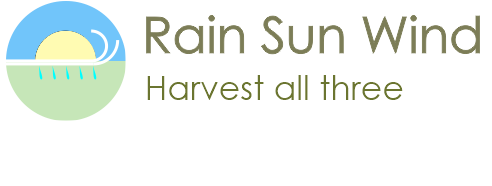There are many things to consider when adding wind power to your solar power system. Among these is whether you should. Because of this topic, we assume that you have already decided to do so. So, we will focus on how to do it. That involves getting the correct type of wind turbine in the right location. It also means connecting it properly.
Pick the correct type of wind turbine.
The type of wind turbine can affect the power, reliability, and safety of your solar and wind power system. Also, the correct type of wind turbine will depend on your situation. So, consider your situation carefully when choosing a wind turbine.
Consider your power requirements.
If you are adding a wind turbine to your solar power system, it is because you need the extra power. So, it helps to know how much extra power you need. This will affect the power rating (or even the number) of the wind turbine(s) you need. Also, remember that the wind is less reliable than the sun, so you might need to over-size your wind turbine.
Consider maintenance and reliability
Many times, the most powerful wind turbine is not the best one for you. You will need to consider reliability and maintenance as well. The higher output of horizontal axis wind turbines comes at a cost. Horizontal axis wind turbines need to be on tall poles (usually over 60 feet) to avoid turbulence.
This turbulence can cause excessive wear. One reason is that weathervaning while spinning creates gyroscopic forces. These forces place great stress on all moving parts. Yet even with great maintenance and care, horizontal axis wind turbines often break after a couple of years. Also, repairing them is some combination of being expensive, difficult, and dangerous.
Vertical axis wind turbines produce less power, but many last over 20 years with no maintenance. This reliability is a major advantage. Also, if one is not powerful enough, you can get two. This is more expensive at first, but it will help in the long run. In the rare case that one needs repairs, you will still have power from the other.
Pick the right location
The right location is crucial, especially for a horizontal axis wind turbine. Noise and safety codes prevent them from being too close to your house or the property line. This, combined with the height, means long transmission lines. So, place the wind turbine as close to your house as codes and safety allow to minimize transmission losses. If you have a vertical axis wind turbine, it’s easier. In some cases, you can even attach a vertical axis wind turbine to your house.
Here are some extra components that you will need:
Rectifier
The output from the wind turbine’s alternator will be 3 phase AC. The rectifier will convert it to DC so it can go to the battery bank or to the inverter. If you have a choice, put it near the battery bank to avoid spending too much on expensive battery cables.
Diversion Load
A wind turbine needs to power a load whenever it is turning. This load will act as braking. If it does not, it can over-speed with damaging effects. If there is no demand for energy, then your system will need an artificial load called a diversion load or dump load. The diversion load can be anything that dissipates energy. This can be a large resistor or even a water heater. But it must be able to handle the power output of the wind turbine plus the solar panels.
Diversion Load Charge Controller
When you have a diversion load, you need something that sends power to it when necessary. The diversion load charge controller will send excess power to the diversion load when there is no demand for this power. The diversion load charge controller(s) should also be able to handle the power output from the wind turbine and the solar panels (through the solar charge controller).
Here is how the wind and solar power systems connect.

There are different ways to set up the connections. The one shown above will reduce micro-cycling of the batteries. In this setup, the output from the rectifier and the input for the diversion load charge controller connect with the input to the battery bank. This is also in parallel with the output from the solar charge controller and the input to the inverter. If the battery voltage exceeds the bulk or float charging voltage (depending on duration), the diversion load charge controller will send the excess energy to the diversion load. The resulting voltage drop will keep the voltage within limits. A charge controller such as the Xantrex C-Series uses this type of setup.
Here are some things to consider:
The bulk setting for the diversion load charge controller should be at or below the high voltage cutoff setting for the battery bank.
The float setting for the diversion load charge controller should be slightly above the fully charged battery voltage.
If the diversion load charge controller has an equalization setting, it must be turned off.
Each wind turbine (if you have more than one) must have its own rectifier.
If you use more than one diversion load charge controller, make sure that they are identical with identical voltage settings.
In summary, you want to have the correct type of wind turbine in the right location. You should consider power requirements as well as maintenance and reliability. Most times, the reliability of vertical axis wind turbines will outweigh the power of horizontal axis wind turbines. Whichever you choose, place it as close to the house as the codes and safety will allow. This will reduce transmission losses. Whatever setup you use will need a diversion load that can handle the power output of the wind turbine and solar panels. This will ensure that you have a safe and reliable system.
